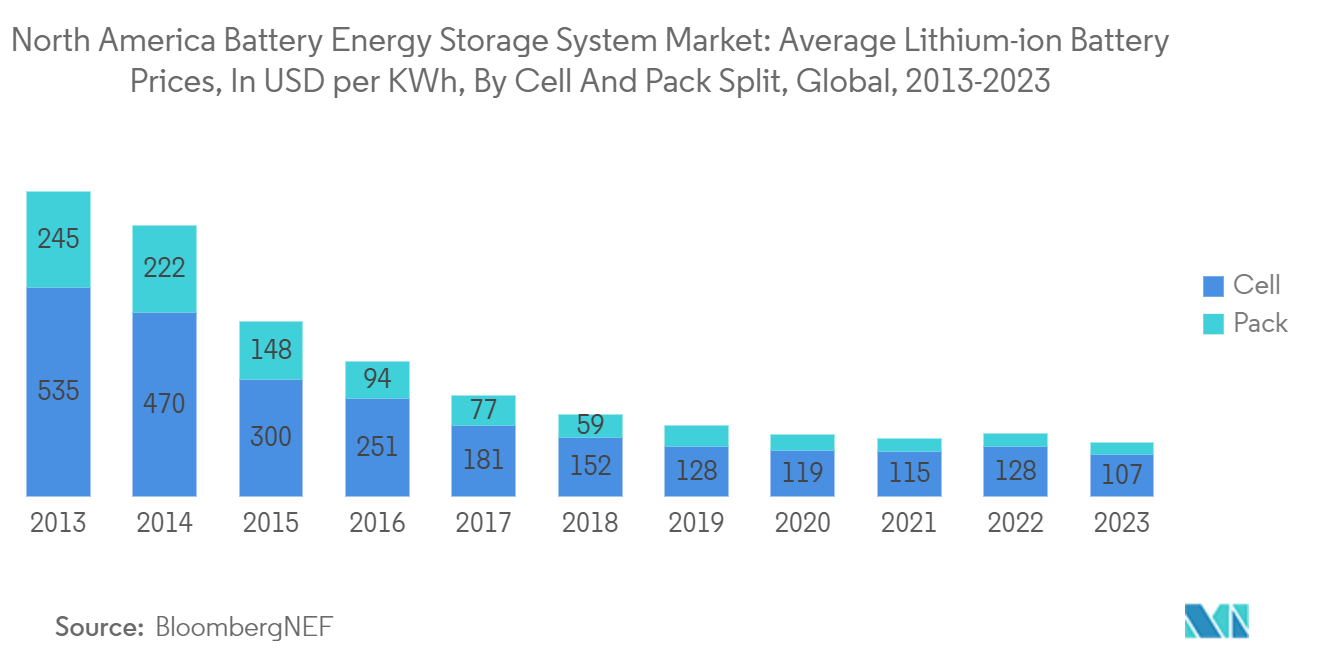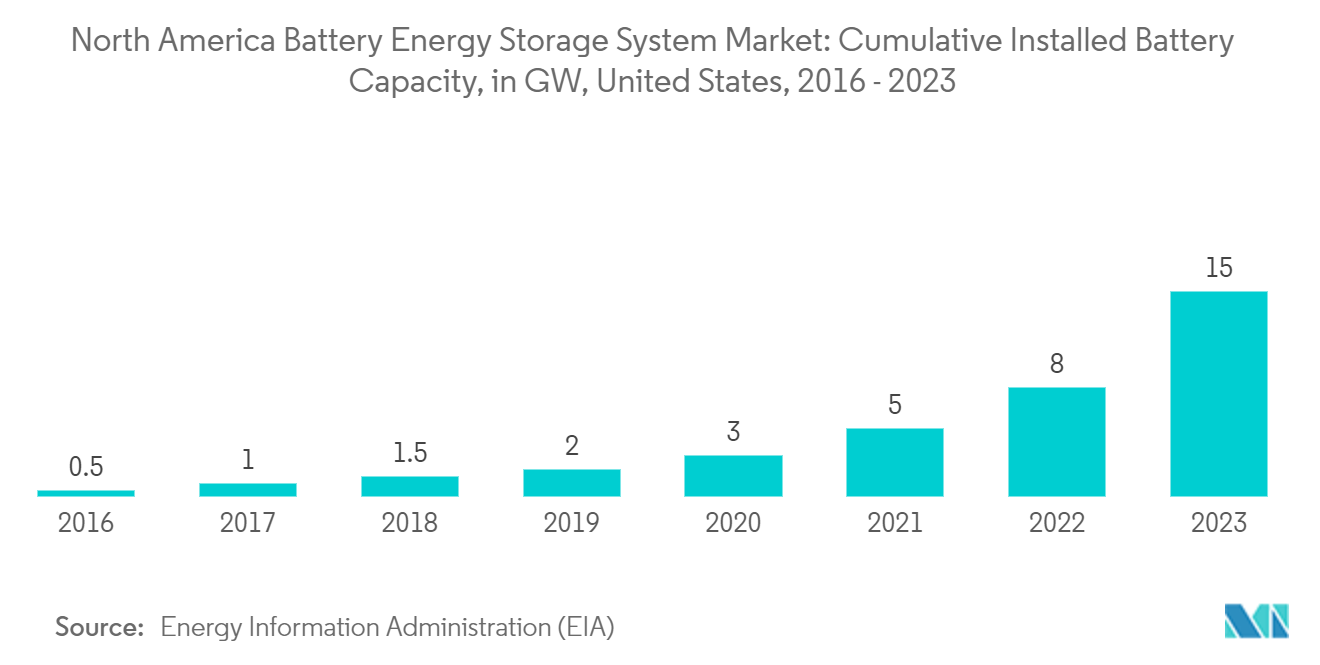Market Trends of North America Battery Energy Storage System Industry
Declining Cost of Lithium-ion Batteries is to Drive the Market
- Lithium-ion battery manufacturers in North America, particularly in the United States, include lower prices than the average mentioned in the graph. One of the major causes of lower prices in the United States is the availability of raw materials and skilled manpower.
- In 2023, the global weighted price of lithium-ion batteries was around USD 139 per kWh. Lithium-ion battery prices are falling continuously; they decreased by 13.6 percent in 2023 year-on-year and by 82.12 percent since 2013. Lithium prices are expected to ease as more extraction and refining capacity comes online and reach USD 100/kWh by 2026.
- The drastic cost decline in batteries is due to sustained R&D improving battery materials, reducing non-active materials, and enhancing cell design and production yield. Additionally, battery storage systems have increased competition, which has lowered prices but reduced manufacturers' profits.
- For instance, in 2024, ENGIE achieved over 1.8 GW of battery energy storage system (BESS) capacity in the United States, adding 1 GW since January. With 24 projects, including six commissioned this year, ENGIE has become a leading BESS operator, particularly in Texas' ERCOT system.
- Additionlly, in August 2024, Aggreko launched two new mid-node battery energy storage systems (BESS) for the North American market: a 500 kW/250 kWh system and a 250 kW/575 kWh system. These systems are part of Aggreko's Greener Upgrades line, designed for both on and off-grid applications, reducing emissions and energy costs. The new BESS options offer flexible, mobile, plug-and-play solutions for various commercial and industrial applications
- Such a scenario is expected to reduce lithium-ion battery prices further, making it much more cost-competitive than other battery types, resulting in the increasing adoption of lithium-ion batteries in numerous applications in the North American region.
- Moreover, the sharp and sustained cost reduction and developments are likely to strengthen lithium-ion as the battery chemistry of choice among all the end-users in energy storage applications across the region. Such developments are expected to drive the market during the forecast period.

The United States to Dominate the Market
- The battery energy storage system (BESS) in the United States experienced significant changes in the past few years. It is especially in the residential and commercial sectors, supported by rising investments in renewable energy infrastructure.
- The rise in the adoption of solar PV systems by the residential, Commercial, and industrial (C&I) sectors is expected to be a substantial driver for the market studied. Federal and state-level policies and incentives, such as investment tax credits and renewable portfolio standards, encouraged investments in BESS installations.
- For instance, in July 2024, IEDP Renewables North America unveiled the Scarlet I Solar Energy Park in Fresno County, California. This 200 MW project, including a 40 MW battery energy storage system (BESS), will power 68,000 homes annually. The project aims to provide clean, affordable energy and contribute to local economic growth by supporting over 230 construction jobs and five permanent positions.
- several companies are invetsing in the battery energy storage systems in the region. For instance, In August 2024, Power Sustainable Energy Infrastructure (PSEI) completed phase one of its investment in the Desert Quartzite Solar+Storage Project in California, securing a 50% ownership stake. The project will deliver 300 MW of solar power and includes a 150 MW/4-hour battery energy storage system (BESS). This collaboration with Potentia Renewables enhances PSEI's presence in the California utility-scale market.
- In the United States, most energy storage for residential, Commercial, and industrial (C&I) applications uses battery storage systems. Other energy storage systems include thermal and mechanical energy storage. Small-scale battery storage is a significant part of developing energy storage in the United States. Small-scale battery storage is at facilities with less than 1 MW of generating capacity.
- According to the U.S. Energy Information Administration (EIA) reveals that from 2016 to 2023, the cumulative installed battery capacity surged from 0.5 GW to 15 GW, marking a notable growth rate of around 65 percent. This swift ascent highlights the burgeoning BESS market, propelled by a rising integration of renewable energy sources and an imperative for grid stability.
- Therefore, considering the abovementioned factors, the battery energy storage systems market is expected to dominate in the upcoming years.


